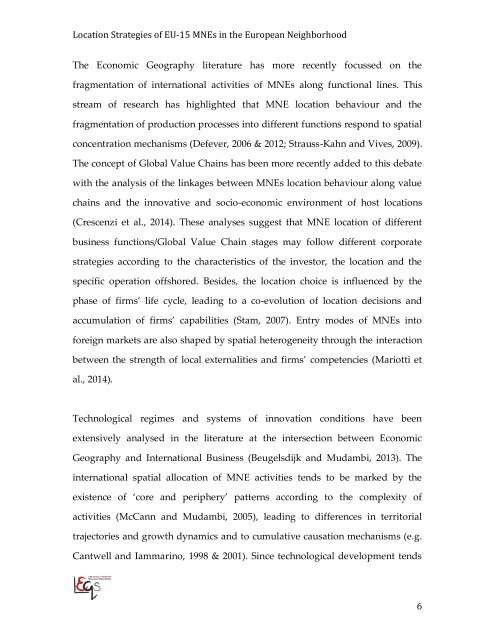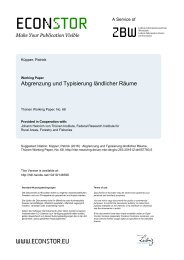their Geographical Neighbourhood
n?u=RePEc:eiq:eileqs:97&r=all
n?u=RePEc:eiq:eileqs:97&r=all
Create successful ePaper yourself
Turn your PDF publications into a flip-book with our unique Google optimized e-Paper software.
Location Strategies of EU-15 MNEs in the European Neighborhood<br />
The Economic Geography literature has more recently focussed on the<br />
fragmentation of international activities of MNEs along functional lines. This<br />
stream of research has highlighted that MNE location behaviour and the<br />
fragmentation of production processes into different functions respond to spatial<br />
concentration mechanisms (Defever, 2006 & 2012; Strauss-Kahn and Vives, 2009).<br />
The concept of Global Value Chains has been more recently added to this debate<br />
with the analysis of the linkages between MNEs location behaviour along value<br />
chains and the innovative and socio-economic environment of host locations<br />
(Crescenzi et al., 2014). These analyses suggest that MNE location of different<br />
business functions/Global Value Chain stages may follow different corporate<br />
strategies according to the characteristics of the investor, the location and the<br />
specific operation offshored. Besides, the location choice is influenced by the<br />
phase of firms’ life cycle, leading to a co-evolution of location decisions and<br />
accumulation of firms’ capabilities (Stam, 2007). Entry modes of MNEs into<br />
foreign markets are also shaped by spatial heterogeneity through the interaction<br />
between the strength of local externalities and firms’ competencies (Mariotti et<br />
al., 2014).<br />
Technological regimes and systems of innovation conditions have been<br />
extensively analysed in the literature at the intersection between Economic<br />
Geography and International Business (Beugelsdijk and Mudambi, 2013). The<br />
international spatial allocation of MNE activities tends to be marked by the<br />
existence of ‘core and periphery’ patterns according to the complexity of<br />
activities (McCann and Mudambi, 2005), leading to differences in territorial<br />
trajectories and growth dynamics and to cumulative causation mechanisms (e.g.<br />
Cantwell and Iammarino, 1998 & 2001). Since technological development tends<br />
6




